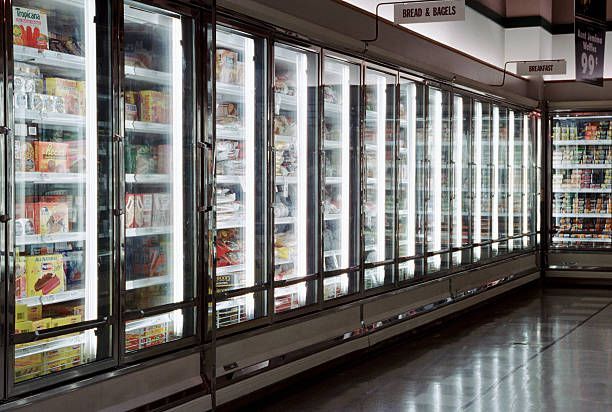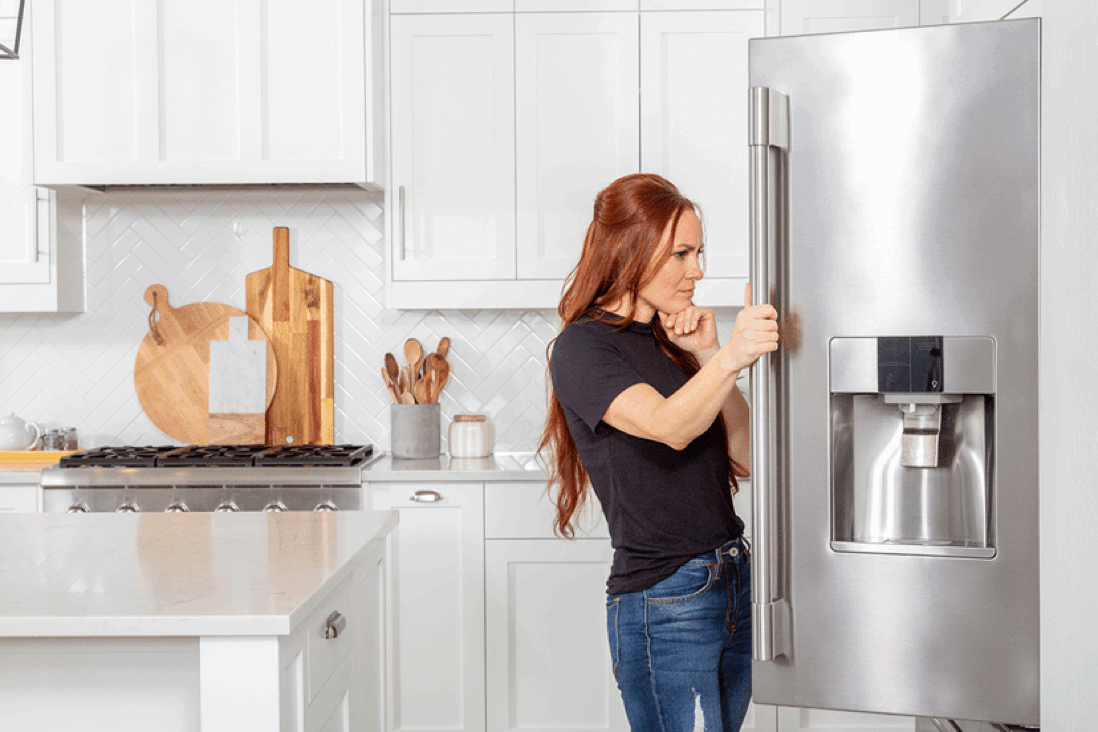The Ultimate Overview to DIY Home Appliance Repair Methods
When appliances break down, it's very easy to feel overloaded. Emergency Sub-Zero Repair Dependable Refrigeration & Appliance Repair Service. With the best knowledge and devices, you can tackle usual concerns on your own. From refrigerators to dish washers, comprehending exactly how to repair and fix these gadgets can save you time and cash. Are you prepared to find vital strategies that will empower you to manage repairs with confidence? Allow's discover the crucial locations where do it yourself skills can make a considerable difference.
Understanding Typical Device Troubles
When you depend on your home appliances, it can be irritating when they all of a sudden stop functioning or act up. Recognizing typical device issues can assist you repair issues properly.
If your oven isn't home heating, faulty aspects or thermostat concerns could be responsible. Dishwashers commonly experience problems with drain, so make certain the filter is clean and the drainpipe hose pipe isn't kinked.
Additionally, pay attention for uncommon noises; they typically indicate mechanical concerns. By recognizing these signs, you can save time and potentially stay clear of pricey fixings. A little expertise goes a lengthy means in maintaining your home appliances, so remain educated to maintain everything running efficiently.
Important Devices for Do It Yourself Repair Works
Before diving into do it yourself appliance repair work, it is necessary to gather the right devices to assure the procedure goes efficiently. Start with a great set of screwdrivers, including both flathead and Phillips, as they're vital for opening most appliances. You'll additionally want a pair of pliers for grasping and turning cords or little elements.
Don't forget a multimeter; it aids you test electric parts and detect issues properly. An outlet collection is useful for loosening or tightening up bolts, while an energy blade can be beneficial for cutting cables or opening up packaging.
Ultimately, consider having a flashlight available to brighten dark spaces inside your appliances. With these crucial devices, you'll be fully equipped to tackle various repairs, saving both money and time. So, gather your equipment and get ready to roll up your sleeves!
Safety First: Precautions to Take
Prior to you start any type of device repair, it's important to prioritize safety. Ensure you use individual safety tools, detach the power source, and maintain your workspace arranged. These basic preventative measures can assist protect against accidents and ensure a smoother fixing process.

Individual Protective Equipment
Safety equipment is a crucial part of any do it yourself device fixing task. You should always put on security goggles to secure your eyes from dust and debris. A durable pair of handwear covers will certainly secure your hands from sharp sides and unsafe products. Consider using a mask if you're handling chemicals or dust, guaranteeing you take a breath securely while functioning. Steel-toed boots are also a smart choice, specifically when lifting hefty appliances. Don't fail to remember to use lengthy sleeves and pants to shield your skin from potential injuries. By prioritizing individual safety devices, you'll substantially lower the danger of accidents and injuries. Keep in mind, being prepared with the ideal equipment maintains you safe and focused on completing your repair effectively.
Source Of Power Disconnection
To guarantee a safe DIY device fixing, disconnecting the source of power is necessary. Prior to you begin any work, you should unplug the device or transform off the breaker. This easy action protects against electric shocks and guarantees that you can concentrate on the repair without fretting concerning unexpected activation. Constantly verify that the device is off by evaluating it with a voltage tester. If you're dealing with larger devices, like a washing machine or dryer, make certain to safeguard the power cord and prevent any kind of contact with water. Remember, security! As soon as you're confident that the power is detached, you can with confidence wage your repair work, understanding you have actually taken the needed precautions to safeguard yourself.
Workplace Company
An efficient workplace can make all the difference in your DIY appliance repair project. Start by clearing your work area of clutter to stop diversions and mishaps. Outline all your materials and tools, organizing comparable things together for very easy accessibility. Utilize a tool kit or organizer to keep tiny components like washers and screws contained and labeled. Make certain you have actually got sufficient lighting; it'll aid you see details clearly and reduce the threat of errors. Don't neglect to maintain safety equipment like handwear covers and goggles within reach. Have a trash bag useful to dispose of waste promptly. A clean area not only improves performance however additionally maintains you safe while you service your appliance repair.
Step-by-Step Overview for Fridge Repairs
When your fridge begins acting up, it can be aggravating, however taking on the problem yourself can conserve you money and time. Unplug the fridge to ensure safety and security. Examine for typical issues like temperature level variations or uncommon noises. Check the thermostat setups; they could be established also high if it's not cooling down. Next off, tidy the condenser coils, which often collect dust and debris. For a noisy fridge, inspect the fan and verify it's not obstructed.
If there's water pooling inside, inspect the door seals for damage or dirt, and clean them if needed. For ice buildup, clear the defrost drain. As soon as you have actually dealt with the problem, plug the fridge back in and check it for a couple of hours. If the problem lingers, you might require to change a malfunctioning part, like the compressor or fan electric motor. Bear in mind, do not hesitate to consult the manual or look for expert assistance if needed.
Taking Care Of Washing Machine Concerns
Just like fridges, washing machines can present their own set of challenges, but numerous problems can be solved with a bit of troubleshooting. If your device won't start, check the power cord and verify it's plugged in.
If your clothes aren't getting clean, take into consideration the water degree and cleaning agent kind; making use of also much cleaning agent can produce excess suds, impacting performance. For leaks, take a look at the hose pipes for fractures or loose links. Tightening up these can often address the trouble. Regular maintenance, like cleaning up the filter, can avoid many problems from developing. Remember, a little troubleshooting goes a lengthy method in maintaining your washing device running efficiently.
Repairing Ovens and ovens
How can you troubleshoot common problems with your oven or range? Beginning by examining the power supply.
If your oven isn't home heating, inspect the temperature setups and confirm the door seals securely. A damaged burner might additionally be the wrongdoer; you might need to change it if it's harmed.
For uneven food preparation, revolve your pans and take into consideration using a stove thermostat to that site validate precise temperature levels. Ultimately, if you listen to uncommon noises or smell gas, shut off the home appliance right away and speak with a professional. By adhering to these actions, you can determine and fix several common stove and oven concerns effectively.
Fixing Dishwashers Facilitated
When your dish washer begins breaking down, it can be frustrating, but dealing with usual concerns isn't as tough discover this as it seems. You'll learn step-by-step troubleshooting techniques that will assist you identify the issue, together with the crucial devices you'll require to take on repair services on your own. Allow's make repairing your dishwashing machine a wind!
Common Dish Washer Concerns
While dishwashers are made to make your life easier, they can sometimes encounter usual concerns that leave you really feeling discouraged. One constant issue is bad cleaning efficiency; this usually takes place because of blocked spray arms or filthy filters. You might additionally see water merging near the bottom, which can indicate a faulty drainpipe or a kinked hose pipe. If your dishwashing machine's door won't lock, maybe an easy issue with the lock system or door seal. Furthermore, strange sounds can signal loose components or worn-out parts. If you scent something strange, it could be time to inspect for food particles or a malfunctioning motor. Addressing these problems early can save you time and hassle in the future (Subzero Repair Service Dependable Refrigeration & Appliance Repair Service).

Detailed Troubleshooting
Before diving into repair work, it's important to determine the certain problem your dishwashing machine is dealing with. If your dishwashing machine will not begin, inspect the power supply and door lock. By systematically attending to each prospective problem, you can identify the problem and take the needed steps to fix it, making your dishwasher feature like brand-new once more.
Crucial Fixing Devices
Having the right tools at your disposal can make all the distinction when repairing your dish washer. Don't forget a bucket or towels for any water splashes during repairs.
If you're taking on blockages, a drainpipe snake or a wet/dry vacuum will be invaluable. You could also desire a level to assure your dishwashing machine's properly straightened. Finally, safety and security gear like safety glasses and gloves will certainly safeguard you while you function. With website here these essential tools, you'll be well-appointed to deal with any kind of dishwasher repair obstacle that comes your way.
Often Asked Concerns
If a Device Is Well Worth Repairing?, how Do I Identify.
To figure out if a device's worth repairing, consider its age, repair work expenses, and existing worth. If repair work surpass half the replacement expense, you may wish to spend in a brand-new version rather.
Can I Discover Replacement Parts In Your Area for My Device?
Yes, you can usually locate substitute parts locally for your device. Check hardware stores, device repair service shops, or local classifieds. Do not fail to remember to bring the design number to guarantee you obtain the right component!
What Common Mistakes Should I Avoid When Repairing Home Appliances?
When fixing home appliances, prevent rushing via diagnostics, neglecting security precautions, or making use of inaccurate tools. Do not skip reviewing handbooks or watching tutorials; they give necessary assistance. Hold your horses and extensive to guarantee effective repair services and prevent more damage.
How much time Does a Regular DIY Device Repair Work Take?
A regular DIY home appliance repair work generally takes one to three hours, relying on the complexity. You'll intend to gather your tools and products first, and comply with instructions very carefully to avoid unnecessary hold-ups.
Exist Any Guarantees for Do It Yourself Appliance Fixes?
When you take on DIY home appliance fixings, warranties normally do not cover your work. Nevertheless, some manufacturers might honor guarantees for components you change. Always inspect your device's service warranty terms before starting any repair services to stay clear of concerns.
Prior to diving right into Do it yourself appliance repair work, it's crucial to collect the right devices to assure the procedure goes efficiently.Prior to you begin any kind of device repair work, it's important to focus on security.To ensure a risk-free Do it yourself home appliance repair service, detaching the power resource is necessary.An efficient job area can make all the difference in your DIY appliance repair work project. Always examine your device's service warranty terms prior to beginning any kind of fixings to avoid issues.